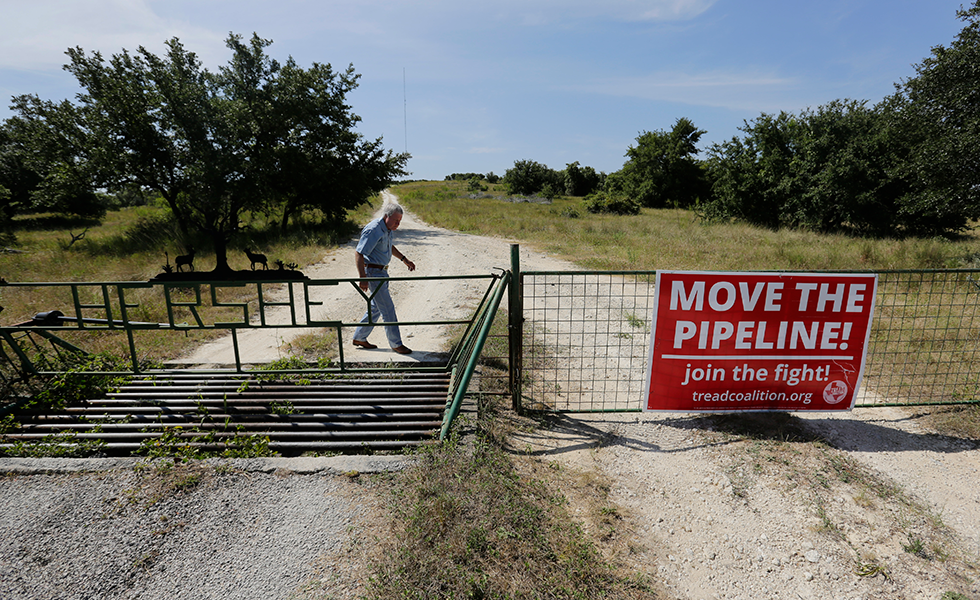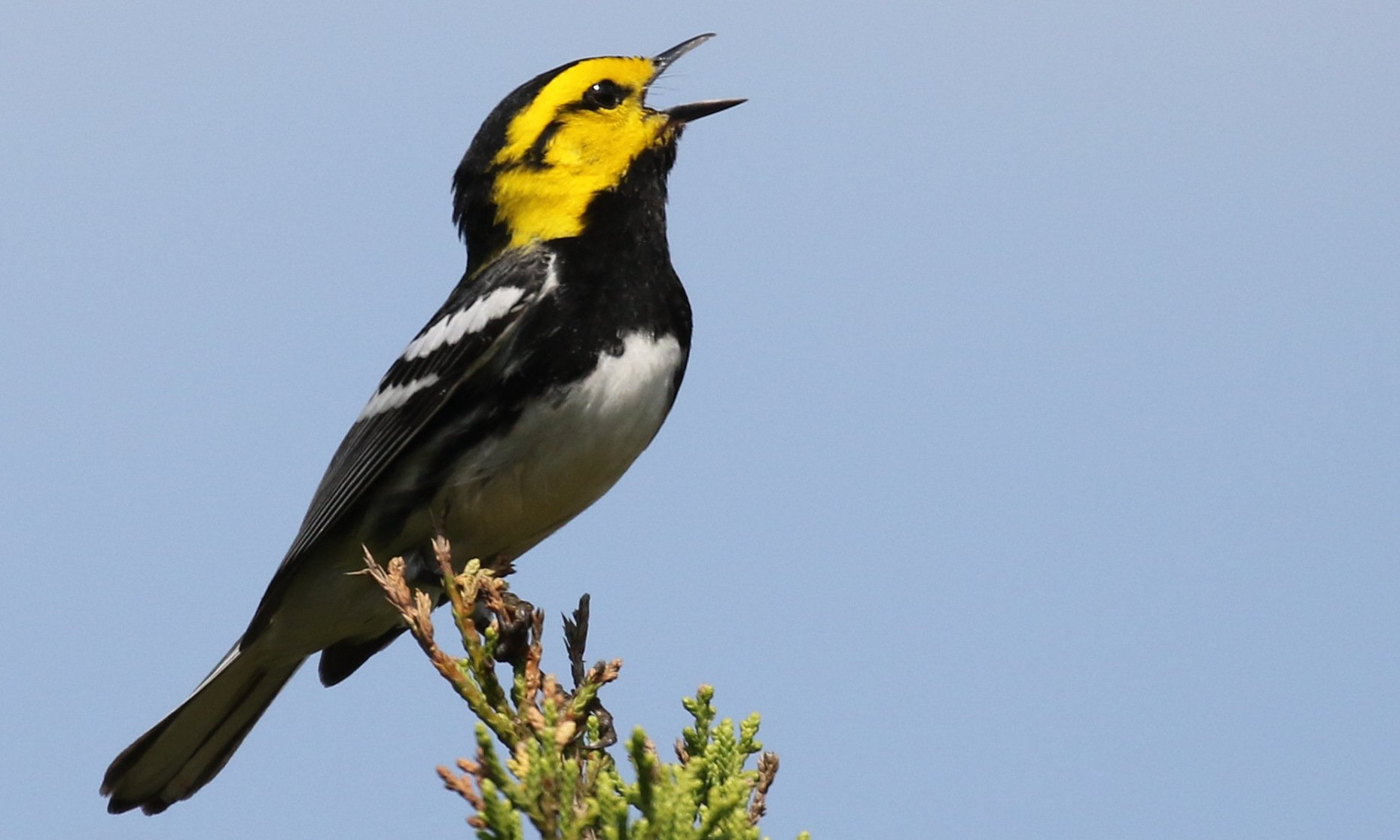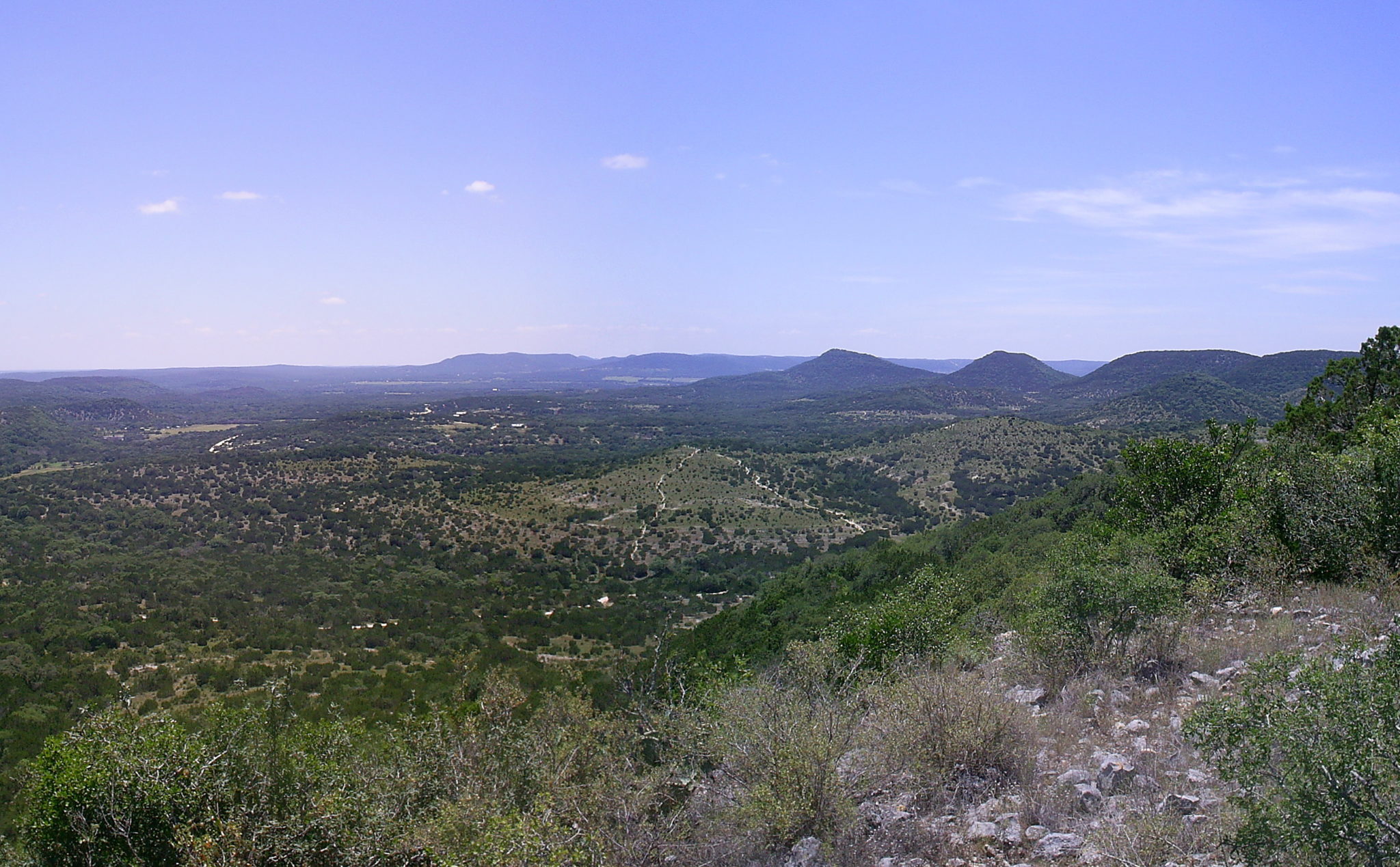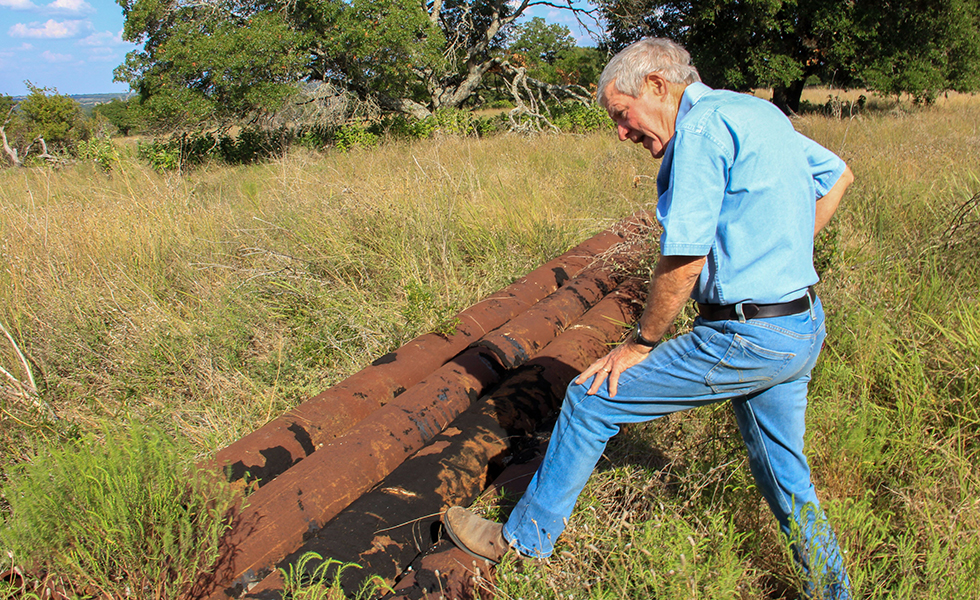
The Long Battle to Stop the Kinder Morgan Pipeline
For months, locals and landowners have tried to stop the Permian Highway Pipeline, a piece of infrastructure connecting West Texas’ prolific oil fields to the state’s Gulf Coast refineries. But they’re running out of options.

Above: Andrew Sansom with some remaining sections from a pipeline on his land that was mostly removed in 2011.
In 1975, Terese Hershey, one of the state’s most influential conservationists, purchased a 1,561-acre tract of land in Stonewall, Texas. For years, she protected the property from the encroachment of nearby development. She worked with The Hill Country Land Trust to establish a conservation easement and turned to Andrew Sansom, a former Texas Parks and Wildlife director, to manage the land with his wife, Nona.
In the past eight years, the Sansoms have cleared more than 1,020 acres of cedar and invasive grasses off the property. They’ve controlled erosion along streams and managed the land’s precious water resources. They’ve also restored the property’s historic 162-year-old stone ranch house, which was left with only its limestone walls standing after a 2003 fire. All of this effort has made the Hershey Ranch the largest piece of protected land in Gillespie County.
Now, it’s under threat.
Kinder Morgan, a multi-billion dollar energy company, intends to build a 430-mile-long, 42-inch-wide pipeline—also called the Permian Highway Pipeline Project—to connect the world’s most productive oil field in West Texas’ Permian Basin to refineries near the Gulf Coast. The pipeline’s proposed path would cut through a 14-acre section of the Hershey Ranch and create a 50-foot permanent easement across about eight-and-a-half acres.
It could also impact the area’s water resources. The ranch sits atop karst, a kind of topography characterized by underground cavities, fractures, and drainage systems. This particular karstic area feeds into the Hill Country’s springs, which in turn, discharge into creeks, which then flow into the Trinity and Edwards aquifers, which supply drinking water to more than 2 million people throughout Central Texas.
The couple first found out that the pipeline would cut through the Hershey Ranch when Kinder Morgan, which is building the pipeline in partnership with EagleClaw Midstream Ventures, sent them a letter about it in October 2018. They immediately approached a lawyer.
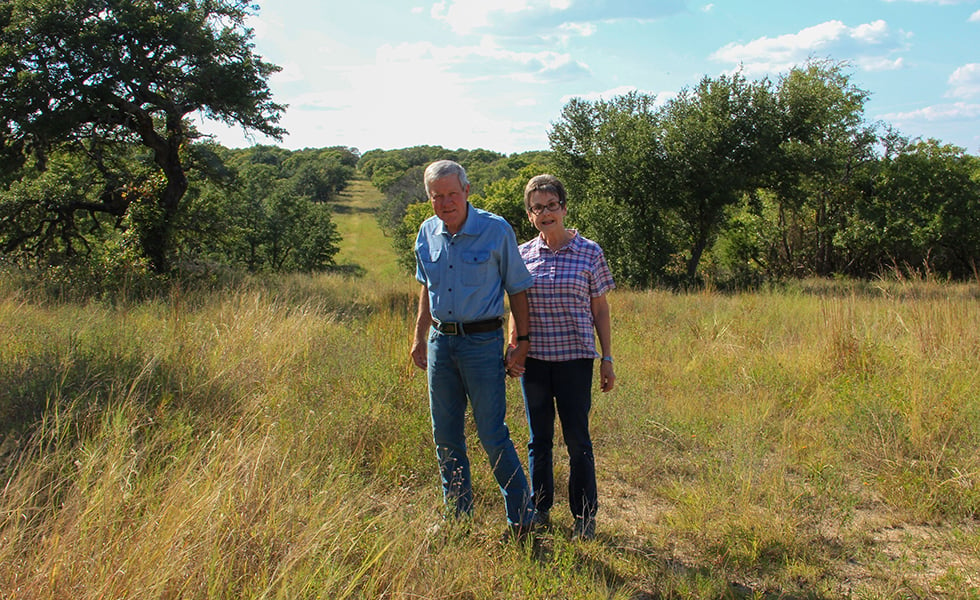
They learned the company’s power of eminent domain supersedes the work the Hershey family did to retire the land from development. The law allows Kinder Morgan to condemn land it needs by checking a box claiming “common carrier” status on a form. By self-designating its pipeline as a common carrier—meaning the company will carry other companies’ product at set rates—Kinder Morgan gains the power to seize private land through eminent domain as a “public utility.” The Texas Supreme Court found in the 2011 case Texas Rice Land Partners v. Denbury Green Pipeline that the Texas Railroad Commission, the state’s oil and gas regulator, doesn’t even have to verify whether a company’s common carrier claim is true.
The Permian Highway Pipeline is part of a larger industrial race to build the infrastructure necessary to connect Texas’ oil fields to refineries. But area residents and local governments fear that if Kinder Morgan is successful in ramming its $2 billion pipeline project through the Hill Country, more pipelines will soon follow, creating a new industrial corridor right through the heart of the state’s porous hills of limestone and a part of Texas that has largely managed to avoid extraction infrastructure. Unsurprisingly, West Texas has been kinder to Kinder. The company has already obtained the necessary permits for the pipeline’s West Texas portion, and broke ground near Pecos in late August. (The pipeline industry also faces resistance in the Rio Grande Valley, where companies want to build three proposed liquefied natural gas export facilities that could disrupt both coastal ecologies and local economies.)
Despite regulatory delays and a recent stock dip, Kinder says it expects to have the pipeline up and running in early 2021, assuring investors it has made “excellent progress on our Permian Highway Pipeline project, with nearly 85 percent of the right-of-way secured along the route and construction activities underway on the western spread.”
That last 15 percent or so will not go quietly into the night, though. Earlier this year, Sansom, the City of Kyle, Hays County, and a handful of other landowners sued Kinder Morgan and the Texas Railroad Commission, saying that the Commission did not properly oversee the company’s routing and condemnation process as required by the Texas Constitution. The lawsuit was dismissed in June after the court said it could “not dictate the policy of the state,” but Sansom and the Texas Real Estate Advocacy and Defense Coalition, a landowner rights group funding his legal fight, are taking the issue to an appellate court.
Even if the suit fails at the appellate stage, Sansom hopes he can force the company to adequately compensate him for his land. In August, a three-member panel of the Blanco County Special Commissioners ordered Kinder Morgan to pay an additional $2.7 million to three other landowners after condemning their property for the pipeline. The increased awards come after eminent domain reform stalled during the last legislative session.
Regardless of the legal outcome, Sansom is more concerned about the ecological fallout if the pipeline is built. Because the pipeline does not cross state lines, it is regulated only by the Texas Railroad Commission, which doesn’t require an environmental assessment to evaluate environmental harm. Still, under the Endangered Species Act, Kinder Morgan must assess the threat levels the project poses to endangered species and provide a report to the U.S. Fish and Wildlife Service. The company, however, is not required to disclose its alternative route and environmental risk assessments to the public.
Others share Sansom’s worries. In early October, the City of Kyle joined San Marcos, Austin, the Barton Springs Edwards Aquifer Conservation District, and the Wimberley Valley Watershed Association in filing a legal notice of intent to sue Kinder Morgan, the Army Corps of Engineers, and U.S. Fish and Wildlife Service under the Endangered Species Act. In the notice, they maintain that if the company applies for federal permits to build the pipeline without an adequate plan to mitigate its impact on federally listed endangered species, including the Barton Springs salamander and the Austin blind salamander, those species could suffer irreparable harm.
And in July, Hays County, the Travis Audubon Society and three landowners filed their own notice of intent to the same agencies under the Endangered Species Act. Their argument focuses more exclusively on the golden-cheeked warbler, a yellow songbird that migrates to Central Texas from Mexico each spring and nests only in the Hill Country’s cedar breaks.
But can some salamanders and songbirds actually stop the steady march of oil and gas?
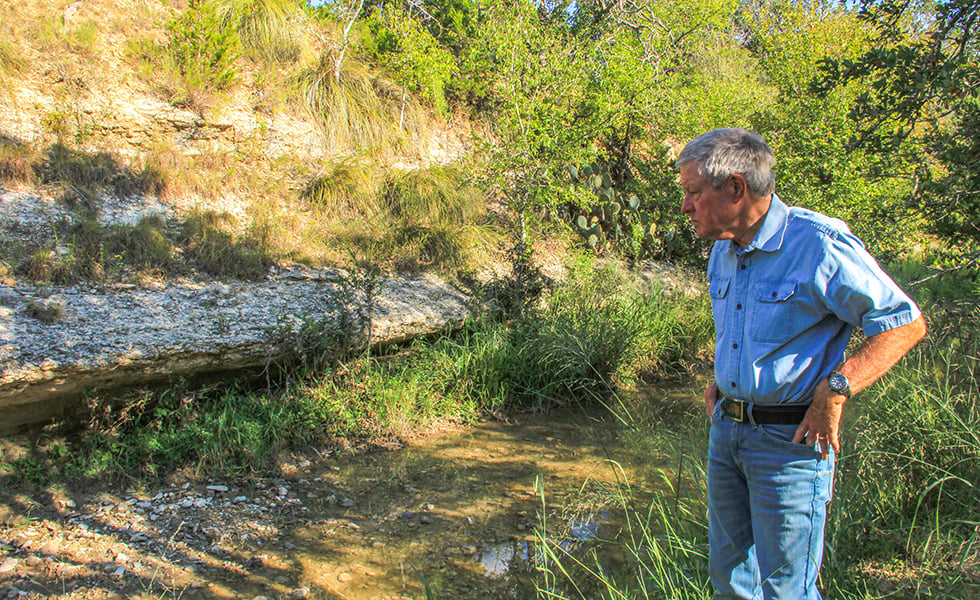
This isn’t Sansom’s first tussle with an industry foe. He and his wife previously fought the Lower Colorado River Authority when it wanted to run a high-voltage transmission line through the ranch in 2016. He was able to negotiate with the company through a regulatory process overseen by the Texas Public Utility Commission to approve an alternative route at the ranch’s edge in 2017. There is no such public process, however, for oil and gas pipelines.
According to Sansom’s attorney, Kinder Morgan has proposed building its easement along an old crude oil pipeline route still visible along Hershey Ranch’s rolling hills. While the old pipeline, built in 1928, was largely removed in 2011 for scrap metal, some of its segments remain exposed near where Williams Creek, a tributary of the Pedernales River, runs across a portion of the now-abandoned line. Sansom has different concerns about Kinder Morgan’s new pipeline. He says that if condensed gas leaked from Permian Highway Pipeline and into the surrounding karst, it could flow downstream into the Pedernales, which supplies Austin with 23 percent of its drinking water.
In an op-ed for the Austin American-Statesman, Kinder Morgan’s vice president of public relations, Allen Fore, wrote that the company is working with a karst expert “to mitigate potential subsurface impacts,” and that the company already operates pipelines that run through Hill Country, such as its 2,100-mile Texas Pipeline.
Opponents, however, argue that none of those pipelines are as large as the proposed Permian Highway, which would cut nine feet into karst limestone in some places. Further, they point to the Houston-based Enterprise Product Partners’ recent decision to reroute its crude oil pipeline around the Edwards Aquifer recharge zone.
A recent memo by Chris Herrington, an environmental officer with the city of Austin, underscores the threat to the area’s water resources, noting that the pipeline is exempt from the Texas Commission on Environmental Quality’s Edwards Aquifer protection rules, and that other applicable regulations are “not sufficient to ensure that no adverse environmental consequences will occur.”
Herrington writes that federal regulations “require natural gas transmission pipelines to provide facilities for draining accumulated liquids,” and that, while Kinder Morgan “disputes that liquid of any quantity will occur in the pipeline,” city staffers contacted independent pipeline engineers who confirmed that not only does liquid regularly occur in gas transmission pipelines, but that such liquid could occur “in the thousands of gallons where there are long segments between valves and/or drains.” Moreover, dye tracing by the city of Austin has demonstrated that water in the Blanco River Basin in the vicinity of the pipeline could migrate to Barton Springs under low groundwater flow conditions.
Austin’s Watershed Protection Department memo was drafted in response to a June resolution from the city council opposing the pipeline and directing city staff to study the potential water quality impacts of the pipeline. The memo follows opposition from other numerous other Hill Country jurisdictions including Hays County, San Marcos, Kyle, and Wimberley.
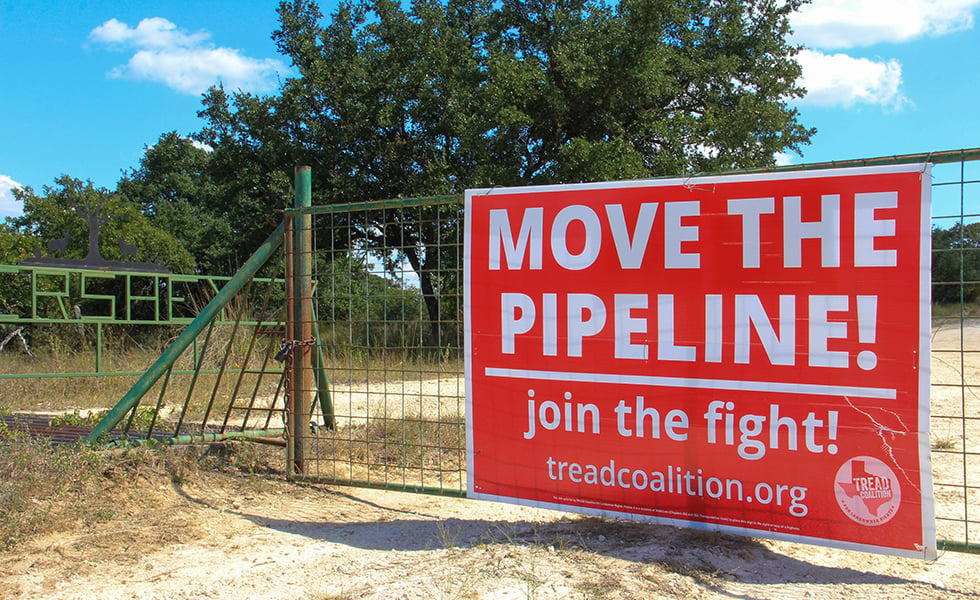
Some of these local governments proposed resolutions in opposition to the pipeline. Even the initially open-to-dialogue Caldwell County in August declined to approve a “memorandum of understanding” with Kinder Morgan that would ease the pipeline’s installation.
But local governments and landowners are beginning to come to grips with the fact that they are essentially powerless against Kinder Morgan, as there remains virtually no public regulatory process for intrastate pipeline routing, unlike other major infrastructure projects. Even the City of Kyle, long ardently opposed, recently signaled its retreat: The city council settled with the company in October, allowing it to build its pipeline conduit in exchange for $2.7 million. The settlement comes after Kinder Morgan filed a lawsuit against the city for passing an ordinance requiring greater depths for pipelines in its borders.
“I understand the City of Kyle has to do what they believe is in their best interest,” says Hays County Commissioner Lon Shell. Still, he says, the settlement “could potentially affect how we’re able to make arguments on other issues.”
Shell says a significant portion of western Hays County contains warbler habitat, including a 600-acre preserve in the southwestern part of the county. The county has spent many years and a lot of tax dollars on implementing a Regional Habitat Conservation Plan approved by U.S. Fish and Wildlife Service in 2012, and while the pipeline won’t directly impact the preserve, it would go through what Shell considers to be “potential preserve land.”
According to David P. Smith, the attorney representing Hays County, the Audubon Society, and three landowners, the company has said publicly that it’s only applying for a limited series of permits for the segments of pipeline that cross waterways under federal jurisdiction. If the Army Corps approves the permits, the company would only be required to evaluate the environmental risks of those small sections, which represent only about 3 percent of the pipeline, Smith said. The threats posed to the warbler and other endangered species by the vast majority of the pipeline—the other 97 percent—would not be assessed. Smith said he hasn’t received any kind of response from the company since the notice of intent was filed.
“So they’re trying on one hand to limit their federal permitting requirement in order to avoid complying with [the National Environmental Policy Act]. However, they want the federal government to tell them that they have an authorization to [harm] federal endangered species anywhere along the pipeline. So they want it both ways, and the problem is they can’t have it both ways,” Smith told the Observer.
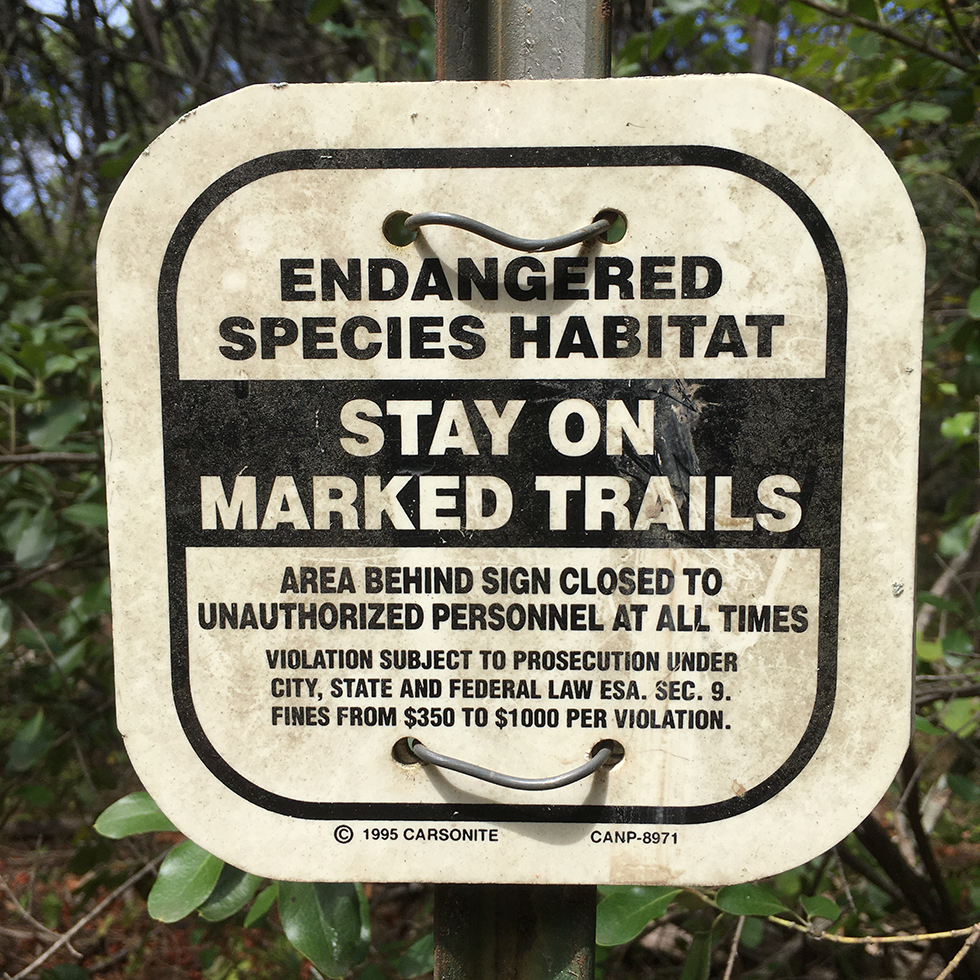
In June, Kinder Morgan said in a statement to the Houston Chronicle that it’s complying with all applicable laws related to endangered species along the pipeline route but has declined to make its permitting process public. The company declined an interview request from the Observer. According to the landowner group’s letter, the company has proposed mitigating its impacts on the warbler by paying for conservation efforts in Burnet County. The potential plaintiffs say this isn’t good enough.
“Kinder Morgan is trying to do this is behind closed doors and out of sight of the public. We feel like that’s highly intentional,” Smith said. “They’re playing keep away with us, with information, data, and also transparency about the process. It’s a little bit of a cat-and-mouse game, and I think it’s by design on their part, otherwise they would have been much more transparent.”
Even if the two potential federal lawsuits succeed in court, they wouldn’t stop the pipeline completely. At most, the lawsuits would force the company to follow the proper permitting processes to comply with federal law, and thus, make sure the company properly mitigates for its inevitable harm to endangered species. Still, for many alarmed about the ongoing climate emergency and sixth mass extinction, the fracked gas pipeline is a sort of symbol of a “highway” to the next Permian extinction literally fueled by the last one.
Read more from the Observer:
-
A Dying Town: When a rural hospital dies, the community around it starts to follow suit.
-
Greg Abbott vs. Austin’s Homeless: As Texas’ governor promotes sensational stories of homeless violence and threatens a state crackdown, the people living on Austin’s streets tell a different story.
-
If DACA Ends, It Would Be a ‘Catastrophe’ For Dreamers: As many as 700,000 people could be directly impacted by the end of the Obama-era program.
